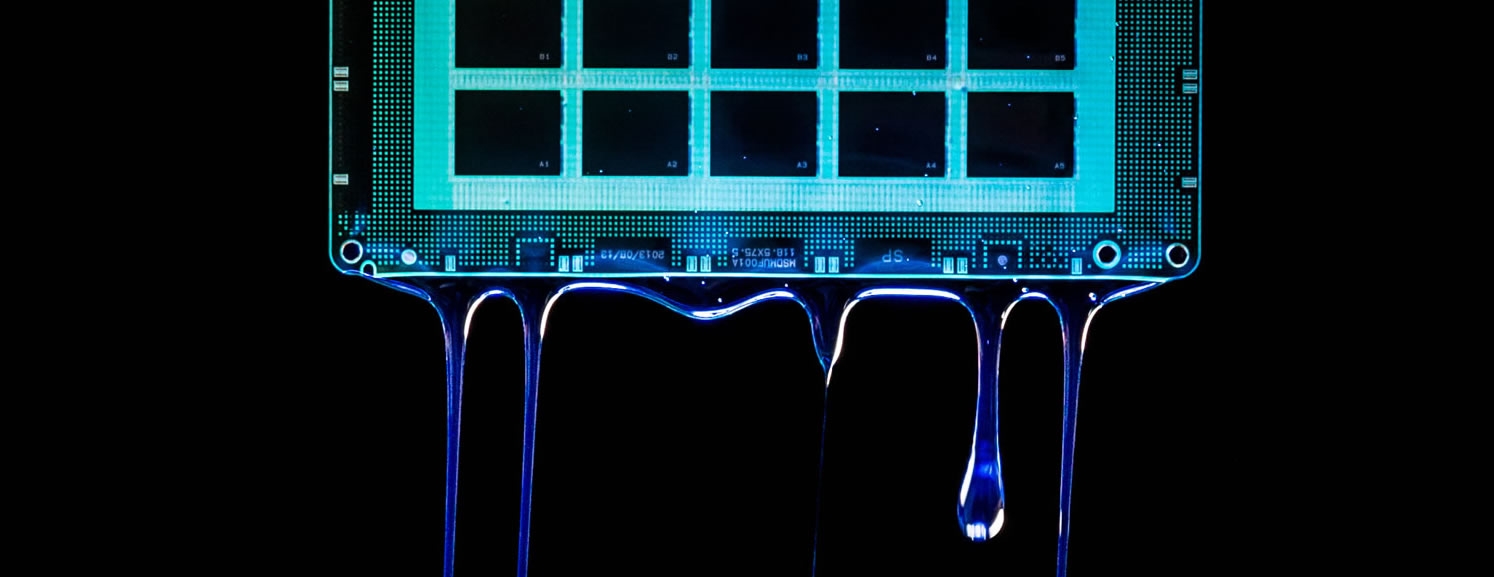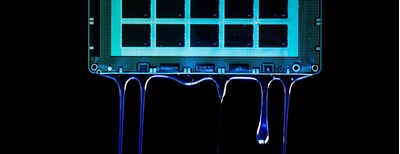Conformal coatings are generally very thinly applied, which provides the best protection possible, but minimizes heat entrapment, excess weight, and other issues. Typically, conformal coating is applied between 1 to 5 mils (25 to 127 microns).
There are four primary ways to measure the thickness of a conformal coating:
- Wet film thickness gauge - Wet film thickness can be measured directly by using gauges that use a series of notches and teeth, with each tooth having a calibrated length. The gauge is placed directly into the wet film, and the measurement is then multiplied by the percent solids of the coating to approximate dry coating thickness.
- Micrometer - Measurements are taken on the PCB at several locations before and after coating. The cured coating thickness is subtracted from the uncoated measurements and divided by 2, providing the thickness on one side of the board. The standard deviation of the measurements is then calculated to determine the uniformity of the coating. This type of measurement is most accurate on hard coatings that don’t deform under pressure.
- Eddy current probes – A test probe is used to directly measure the thickness of a coating by creating an oscillating electromagnetic field. The thickness measurements are non-destructive and very accurate but can be limited depending on the availability of a metal backplane or metal under the coating, and the open contact area available on the test sample. Without metal below the test area no measurements will be made. If the probe does not sit flat on the test area (i.e. a highly populated PCB), readings will be inaccurate.
- Ultrasonic thickness gauge – It measures coating thickness using ultrasonic waves, so does not need a metal backplane like eddy current probes. Thickness is calculated from the time sound waves take to travel from the transducer, through the coating, bounce off the surface of the board, and back. A conductive medium, like propylene glycol or water, is needed to provide good contact with the surface. This is generally considered a non-destructive test unless there is a concern with the conductive medium affecting the coating.
Ask A Technical Question
Stay up-to-date on Chemtronics news, products, videos & more.


